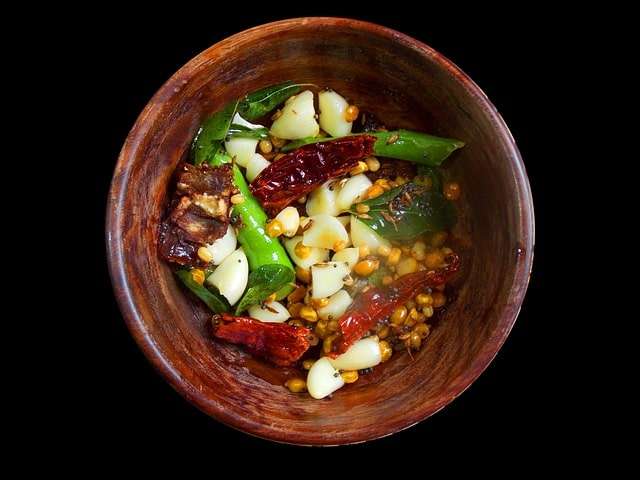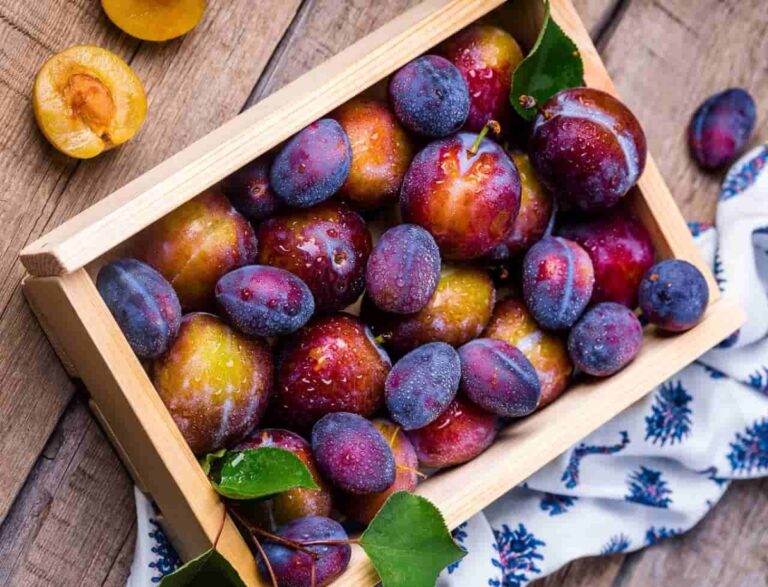35 top tamarind kitchen insights and benefits
Did you know tamarind is native to tropical Africa, but since it’s so plentiful in India, many people think it came from there?
- Arab traders were the first to introduce tamarind to India, which led to the country being the main producer of this tropical fruit across the globe. The Portuguese were the first people to bring tamarind to the East Indies. From there, Spanish traders introduced it to the Philippines, and finally it found its way to Mexico. In the 17th century, early colonists were responsible for spreading tamarind over the majority of the Americas.
- Natural medicines sometimes make use of all parts of the tamarind fruit, including the pulp, leaves, and bark. In instance, the bioactive component of tamarind may be found in the essential oil that is extracted from the leaves of the tropical tree that produces tamarind.
- The thick, sticky pulp of the fruit that is trapped in the pod has a flavour that is somewhere between sweet and sour, with overtones of fruit that are both refreshing and energising. The sweetness of the pulp increases with the ripeness of the fruit, while the unripe fruit has a taste that is unmistakably astringent.
- John Wheeley Lea and William Henry Perrins created the renowned sauce in 1835. Tamarind extract is one of the primary components in the sauce, and it is only added when the sauce has been appropriately matured (in oak barrels for three years), along with malt vinegar, cloves, red chilli pepper, treacle, and brown sugar.

Tamarind nutrition values and health benefits
- Tamarind, which is high in potassium and has a good amount of B and C vitamins, is also an excellent source of these vitamins. The uncooked pulp of the tamarind fruit contains mostly carbohydrates and fibre, with just trace levels of fat and protein.
- Tamarind is a traditional medicine cure that has a vast variety of applications, including the treatment of sore throats, constipation, and sunstroke.
- Tamarind includes polyphenols, which are antioxidants that may assist in the regulation of inflammation in the body. Because of its anti-inflammatory properties, it has a long history of usage in many civilizations’ therapeutic practises. Tamarind contains a number of bioactive components, some of which are responsible for these effects. These bioactive substances include alkaloids, flavonoids, tannins, phenols, saponins, and steroids.
- According to the findings of recent studies, the use of tamarind in traditional medicine as a treatment for painful conditions and inflammatory disorders like arthritis may have a solid scientific foundation. In addition to this, they recommend that future clinical research and the prospect of medication development be explored.
- There is no proof that consuming tamarind pulp on its own will alleviate pain, however there is evidence that extracts derived from various sections of the plant can help alleviate pain. One research from 2013 indicated that extracts from tamarind seed might help reduce the discomfort of arthritis.
- The capacity of the tamarind fruit to enhance liver function is one of the fruit’s possible health advantages that is less well recognised to the general public. Protective polyphenols found in tamarind pulp have been demonstrated to improve liver health and function. These polyphenols also provide antioxidants that combat oxidative stress, increase glutathione levels, and lessen the toxic load on the liver. Tamarind pulp is found in tamarinds.
- Numerous studies have shown that the antioxidant qualities of tamarind may aid in the prevention and treatment of cancer, notably renal cell carcinoma. In a study published in 2012, researchers utilised an extract of the fruit’s seeds and discovered that the polyphenol components in those seeds both slowed the progression of cancer and helped prevent its occurrence. In addition, tamarind has a high concentration of antioxidants, which are known to have a role in the prevention of cancer.
- Because tamarind is a legume, certain individuals are likely to have an adverse response to it. However, just because you have an allergy to one kind of legume, like soy, it does not always follow that you would also have an allergy to tamarind or any other type of legume.
- If you have an allergy to tamarind, you should be very cautious while reading food labels since it is possible for it to be an ingredient in professionally made sauces (such as Worcestershire sauce and HP) as well as other types of food. Labels are not required to provide a warning about its presence since it is not one of the eight main allergens; nonetheless, it must be listed in the list of ingredients.
- The pulp of tamarinds has been known to have a laxative effect. Greater quantities increase the likelihood that there may be consequences. It has come to light that some tamarind sweets brought into the United States from other countries contain lead (either in the candies themselves or in the wrappers). These sweets should not be consumed by youngsters or by women who are pregnant since lead is extremely harmful to both of these populations.
100g of tamarind has 239 calories (997 kJ), 2.8g of protein, 0.6g of fat, and 63g of carbs, including 5g of fibre.

How to store tamarind and how to buy them
- When choosing fresh tamarind, its look is one of the most important factors in assessing its overall quality. Look for tamarind pods that have a dark brown colour, since this indicates that they are ready to be harvested. Steer clear of pods that are very wrinkled or have mould stains on them. The surface ought to be silky and lustrous, which is indicative of recent preparation.
- The amount of moisture in tamarind is an important factor to consider when calculating its shelf life. Tamarind is susceptible to rapid deterioration when exposed to high levels of moisture since this promotes the development of mould and bacteria. It is essential to maintain a dry environment for the tamarind during the storing process. Before placing tamarind pods in an airtight container, you should first ensure that they are totally devoid of moisture. Only then should you place them in the container.
- Tamarind is very temperature-sensitive, and maintaining it in the appropriate circumstances for as long as possible can considerably increase its shelf life. The ideal environment for storing tamarind is one that is cold and dry, shielded from both direct sunlight and sources of heat. When heated at high temperatures, tamarind may lose its distinctive flavour, as well as its texture and some of its nutritious content. If heated to high levels for an extended period of time, the tamarind has the potential to get sticky, to dry up, or even to develop mould.
- It is crucial to clean your tamarind well if you want it to continue to retain its flavour and freshness. To begin, remove any dirt or debris from the tamarind pods by washing them well under lukewarm water. Then, using a soft brush or a sponge, clean the pods in a circular motion to remove any residue that is persistent.
- It is common practise to store tamarind pods in the refrigerator so as to maintain the pods’ high level of freshness while also increasing their shelf life. Simply put the tamarind pods in a resealable bag or an airtight container, then set them in the refrigerator to keep them fresh. The low temperature inhibits the action of the naturally occurring enzymes, and it also stops the development of any mould or bacteria that could be present.
- The shelf life of tamarind pods may be significantly extended by the use of the freezing process. To begin the process of freezing tamarind, remove the seeds and fibres from the fruit first. After that, put the cleaned pods in a bag or container that won’t let air in, and make sure the bag or container is well sealed so that the pods won’t have freezer burn. Tamarind may lose some of its tart flavour if it sits out in the open air for long periods of time; freezing it helps keep both its flavour and its freshness.
- Signs of bad tamarind:
- Tamarind concentrate storage issues, including mould development, are widespread. This acidic and sticky substance has to be kept carefully to prevent mould growth. Mould grows quickly in damp places; therefore, it’s important to keep your tamarind concentrate in airtight containers at all times.
- The existence of a strange odour is a warning indicator that your tamarind concentrate has gone bad while you were keeping it. A nasty smell coming from your tamarind concentrate is a sure sign that it has gone bad. The stench is sometimes strong enough to be offensive. If something doesn’t smell right, listen to your instincts and toss it.
- Tamarind concentrate is a versatile ingredient that gives a tart punch to numerous cuisines. However, discolouration from incorrect storage may diminish both its visual appeal and its flavour. Tamarind concentrate may change colour or acquire brown patches if left out in the open or if exposed to dampness.
- Maintaining an eye on the consistency of your tamarind concentrate is essential when storing it. The quality of your tamarind concentrate might degrade with time if you don’t properly store it, since the texture will alter in an unpleasant way. If you observe any clumping, hardness, or separation of the concentrate, it’s a clear indicator that it’s time to chuck it away.

Cooking techniques, secrets, and tips from the kitchen
- Tamarind is a staple ingredient in the cuisine of Southeast Asia, particularly in sour soups such as the Filipino Sinigang and the Thai Tom Yum. The tanginess of the tamarind properly counteracts the richness of the broth, resulting in a flavour profile that is absolutely in tune with itself.
- In traditional cooking, tamarind has always been highly prized, both for the singular flavour it imparts and the variety it affords chefs. Pad Thai is a meal that epitomises Thai cuisine and is known for showcasing the acidic and delicious qualities of tamarind. The tamarind paste in this stir-fried noodle dish is combined with additional ingredients like prawns, tofu, bean sprouts, and peanuts to create a meal with a flavour profile that is harmoniously balanced between sweet, sour, and savoury notes.
- Sambar, a delicious lentil soup, and Rasam, a sour tomato-based soup, both include tamarind as a prominent component. Tamarind is a staple in Indian cuisine. The sourness of the tamarind is essential to the overall flavour profile of these meals because of its depth and complexity. Tamarind is also used in the preparation of several types of chutney, which is a sweet and sour condiment that goes exceptionally well with appetisers such as samosas and pakoras.
- Traditional Mexican sweets like tamarind balls and tamarind pulp candies use tamarind as an ingredient due to the fruit’s prevalence in Mexican cooking. These confections have a delectable blend of sweet and sour flavours, which is one of the reasons why both youngsters and adults gravitate towards selecting them.
- Tamarind functions as a natural flavour enhancer in savoury recipes, offering a tart rush that helps to balance out the rich and savoury flavours in the dish. It is possible to utilise it to give curries, stews, and soups a delightfully tart edge while also adding depth to the dish. When it comes to dessert dishes, tamarind contributes a hint of acidity that works well with the sweetness. It is possible to utilise it in the preparation of jams, sweets, and even drinks that have tamarind as an ingredient.
- One of the most common use for tamarind is to utilise it as an ingredient in marinades and sauces. Adding tamarind to meat may help tenderise it while also infusing it with a blast of flavour. The flavour of grilled meats or vegetables that have been roasted may be improved with the addition of tamarind-based sauces, such as tamarind glazes or dipping sauces. In addition, tamarind is an essential component in a wide variety of classic curry and gravy recipes. These meals get an extra layer of nuance and complexity because to the tartness of this ingredient, which also contributes to the overall flavour harmony.
- Tamarind functions as a natural flavour enhancer in sweet dishes, offering a balance of acidity to compliment the sweetness that is already present in the dish. Depending on the level of flavour that you want, you may use it in a variety of forms, such as tamarind paste, tamarind concentrate, or even tamarind syrup. The tart flavours of tamarind may make baked goods like cakes and pastries, and even ice creams, taste even better. Imagine a tart tamarind glaze being poured over a decadent chocolate cake or a scoop of tamarind-infused sorbet being served out as a palate-cleansing dessert.

The history of tamarind, from the beginning until today
- The use of tamarind in both medical and culinary contexts dates back to ancient times, when it was highly prized for the benefits it offered both in and out of the kitchen. It was thought that its birthplace was in East Africa and that it spread to other parts of the world via commerce and exploration throughout time.
- In cuisines from all around the world, tamarind has a long and illustrious history of usage. Tamarind was held in such high respect in ancient Egypt for its therapeutic powers that it was even employed in the embalming process.
- Tamarind has been a fundamental component of traditional Indian cooking for hundreds of years. It imparts a sweet-and-sour flavour profile to a variety of foods, including chutneys, curries, and pickles. Popular dishes in Thai cuisine, such as Pad Thai, rely heavily on tamarind as an essential ingredient because of the dish’s signature sweet-and-sour flavour profile.
- Traditional Mexican desserts and drinks, such as tamarind margaritas and tamarind-flavoured agua frescas, both use tamarind as an ingredient.
- Adding a distinct dimension of flavour to savoury foods like stews and marinades, tamarind is a common ingredient in the cooking of Middle Eastern countries. In addition, tamarind is often used in West African cuisine, where it is incorporated into a variety of dishes including soups, sauces, and condiments.
- Throughout the course of human history, tamarind has made its way to numerous continents, where it has adopted new culinary traditions and become an essential component of a wide variety of cuisines. As a result of its adaptability and distinctive flavour, it has become a much-loved ingredient in kitchens all around the globe.
- There are many different kinds of tamarind, and each has its own set of distinguishing qualities as well as flavour profile. The following types of tamarind are among the most widely available:
- Thai Tamarind: Thai tamarind, also known for its very sour flavour and rich dark colour, is often used in Thai cooking to give dishes like Pad Thai and Tom Yum soup a tangy kick.
- Tamarind from India The tamarind from India is a popular ingredient in Indian cuisine and is well-known for having a flavour that is both sweet and sour in equal measure. It is most often used in the preparation of chutneys, curries, and pickles.
- The flavour of Mexican tamarind, in comparison to that of other types of tamarind, is often more sweet and less sour. It is most often seen in Mexican sweets, beverages like Agua de Tamarindo, and savoury meals like mole sauce.
- Tamarind from Africa: This kind of tamarind, which is native to parts of Africa, has a flavour that is less intense than that of other types. It is a common ingredient in the traditional stews and sauces of Africa.







